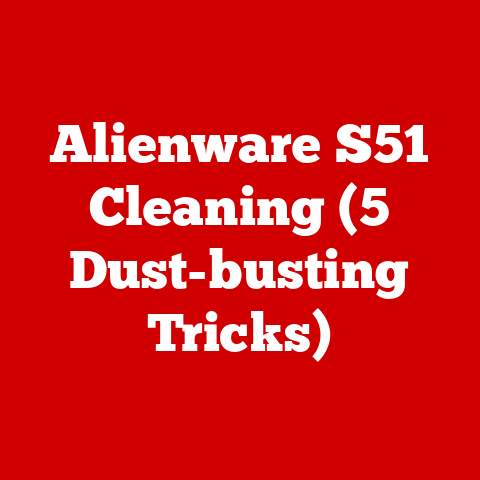Precision 5860 (3 Rendering Benchmarks)
Have you ever found yourself scratching your head, trying to figure out how well your computer handles rendering tasks? If so, you’re in good company. Many of us, including myself, have been there. Let’s dive into the nitty-gritty of three essential rendering benchmarks that can help you understand how this beast performs.
Getting to Know the Precision 5860
The Precision 5860 isn’t just any machine; it’s designed for professionals who need serious computing power. Whether you’re tackling complex 3D modeling projects or editing high-definition videos, this machine is built to meet those demands. But how do we truly measure its capabilities? That’s where rendering benchmarks come into play.
My First Encounter with Rendering Benchmarks
I still recall my initial attempt to test my computer’s rendering capabilities. It was both thrilling and overwhelming. I had no idea where to start, and that’s exactly why I’m sharing my journey with you today. By learning from my experiences, I hope to make your exploration smoother and more insightful.
Understanding Rendering Benchmarks
Rendering benchmarks are specialized tests that evaluate how well a computer can process and render graphics. They provide valuable insights into hardware performance under specific conditions. Let’s take a closer look at three popular benchmarks.
1. Cinebench
Cinebench is a favorite among users for its simplicity and precision. It tests CPU and GPU performance through rendering tasks, making it a go-to tool for many professionals.
Running Cinebench on Windows
- Download Cinebench: Visit the official Maxon website and grab the latest version.
- Install the Software: Follow the installation prompts; it’s quick and straightforward.
- Launch Cinebench: Open it from your desktop or start menu.
- Select Test: Choose between CPU (multicore or single-core) and OpenGL tests depending on what you want to evaluate.
- Run the Test: Click ‘Start’ and watch your system work its magic.
- Analyze Results: Compare scores against other systems or previous results.
Running Cinebench on macOS
- Download Cinebench: Available on the App Store or Maxon’s site.
- Install: Drag and drop into your Applications folder.
- Open Cinebench: Launch it from Applications.
- Choose Test Type: Select CPU or GPU.
- Execute Test: Hit ‘Run’ and observe the metrics.
- Review Performance: Use the results to gauge system efficiency.
2. Blender Benchmark
Blender is a well-known tool in the 3D community, renowned for its robust benchmark that assesses both CPU and GPU performance using real-world scenes.
Steps for Windows
- Download Blender: Head to Blender’s official website.
- Install Blender: Follow the wizard instructions for installation.
- Access Benchmark: Navigate to the Blender Benchmark option within the software.
- Select Scenes: Choose different scenes like “classroom” or “barbershop” to test various aspects of rendering.
- Run Benchmark: Start the test and observe results upon completion.
- Interpret Data: Analyze how well each scene was rendered.
Steps for macOS
- Download Blender: Obtain it from the App Store or Blender’s website.
- Install Application: Move it to your Applications folder.
- Open Benchmark: Access through Blender’s interface in the “Render” menu.
- Choose Scenes: Pick scenes that match your interests or project needs.
- Execute Benchmark: Run it and analyze outputs.
- Compare with Standards: See how your system stacks up against others.
3. V-Ray Benchmark
V-Ray is renowned in the industry for its comprehensive testing capabilities, focusing primarily on ray tracing performance.
Running V-Ray on Windows
- Download V-Ray Benchmark: Secure a copy from their official site.
- Install Program: Complete installation by following on-screen instructions.
- Open V-Ray: Launch from your desktop shortcut or start menu.
- Select Tests: Decide on CPU or GPU-specific tests based on your focus area.
- Run Benchmark: Click ‘Start’ and await results.
- Examine Findings: Detailed insights will show strengths and weaknesses.
Running V-Ray on macOS
- Download V-Ray: Visit their official page for downloading options.
- Install Software: Drag it into Applications folder for easy access.
- Launch V-Ray: Open from the Applications list.
- Choose Tests: Opt for CPU or GPU evaluations as per your preference.
- Initiate Benchmark: Press ‘Run’ and review findings once complete.
- Evaluate Performance: Compare results to industry standards.
Troubleshooting Common Issues
Even with clear instructions, hiccups can happen during benchmarking tests. Let’s troubleshoot some common issues together.
Installation Failures
- Check Compatibility: Ensure the software matches your OS version, especially if updates are recent.
- Disable Antivirus Temporarily: Security software might block installations inadvertently.
Software Crashes
- Update Drivers: Outdated drivers often cause instability in benchmarking applications.
- Check System Resources: Close unnecessary applications to free up memory for intensive tasks.
Inaccurate Results
- Repeat Test: Sometimes rerunning benchmarks can correct anomalies caused by temporary system states.
- Verify Settings: Ensure settings align with recommended configurations for consistent results.
Personal Insights and Tips
From my experience, patience is key when running these benchmarks. Initial attempts may not yield perfect results, but persistence pays off as you become more familiar with the process.
Advanced Techniques
For those seeking deeper insights, consider adjusting render settings manually before running tests to explore how different configurations affect performance outcomes.
Important Considerations
- Backup Data: Always safeguard important files before testing to avoid accidental loss.
- Monitor Temperatures: High temperatures can damage components; use monitoring tools like HWMonitor or Core Temp to keep an eye on things.
Personalized Storytelling
I once spent an entire weekend benchmarking my Precision 5860, tweaking every setting possible just to see how it affected performance. It was a learning curve but also quite rewarding when I finally saw improvements in render times after adjusting some lesser-known configurations.
Conclusion
Testing your Precision 5860’s rendering capabilities through benchmarks like Cinebench, Blender, and V-Ray offers invaluable insights into its performance potential. By following these step-by-step instructions and troubleshooting tips, you’ll be well-equipped to evaluate your system’s strengths and weaknesses accurately. Whether you’re a beginner just starting out or an experienced user looking to optimize performance further, understanding these processes can enhance your workflow and assist in making informed decisions about future upgrades or optimizations.
Feeling ready to give it a try? I’m here if you have questions or need more guidance along the way!






